Type species: Sphinx cingulata Fabricius, 1775.
(Taxonomic note. The species of this genus were included in Herse for many years; for the correct interpretation of this genus see Sphinx.)
Occurring throughout the tropical and subtropical regions, where it is represented by six species.
IMAGO: Less heavily built than Acherontia, with narrower forewings. Proboscis up to 2.5 times body-length, tapering towards tip. Inner lateral cavity of second segment of labial palpus deep and covered with long scales. Male antenna of almost equal thickness to terminal hook; that of female slightly club-shaped. Abdomen tapering. Tarsus slender and not compressed; mid- and hindtarsi with a basal brush on ventral side of first segment. Hindtibia with two pairs of spurs. Pulvillus very small. Paronychium with only one lobe.
Genitalia. Male valva with exterior patch of multi-dentate friction scales. Sacculus as in Acherontia, short, divided into two curved apical teeth, the dorsal one directed to base. Gnathos absent; uncus broad basally with a truncate apex; phallus stout, unarmed.
OVUM: Very small for size of moth, spherical. Bright, glossy blue-green when laid.
LARVA: As variable in ground colour as those of Acherontia, but horn smooth, erect and slightly curved. Head large, oval. Cuticle smooth in final instar; with oblique lateral stripes on abdominal segments or with longitudinal stripes.
PUPA Smooth, glossy brown, with a prominent 'jug-handle' proboscis free from body. Cremaster large, with two closely approximated short spines at tip.
HOSTPLANT FAMILIES: Mainly shrubs and herbaceous plants of the Convolvulaceae, Fabaceae and Boraginaceae.
UK: Pink-spotted hawkmoth; Sweet-potato hornworm, D: Süßkartoffelschwärmer, N: Søtpotetsvermer.
Sphinx cingulata Fabricius, 1775, Syst. Ent.: 545.Type locality: America.
[Further details on this species, as well as photos of all stages, can be found on Lepiforum.]
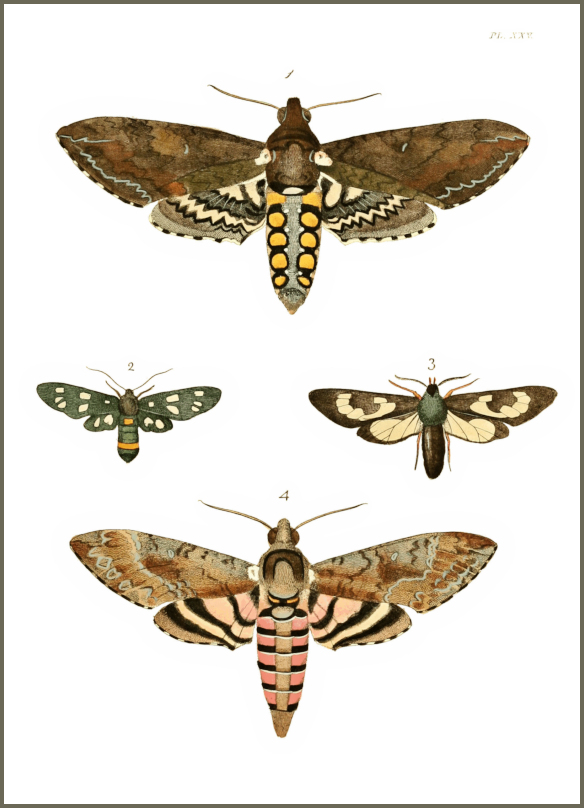
Neotropical.
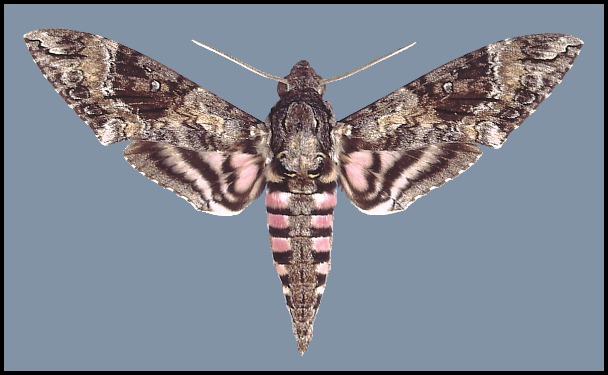
Wingspan: 90--120mm. Differs from Agrius convolvuli (Linnaeus, 1758) in having bright pink abdominal 'ribs', as opposed to the reddish pink of Agrius convolvuli, and pink at base of hindwing. In f. decolora Edwards, the 'pink ribs' are pale pinkish-white, almost white.
An avid visitor to flowers and a strong migrant.
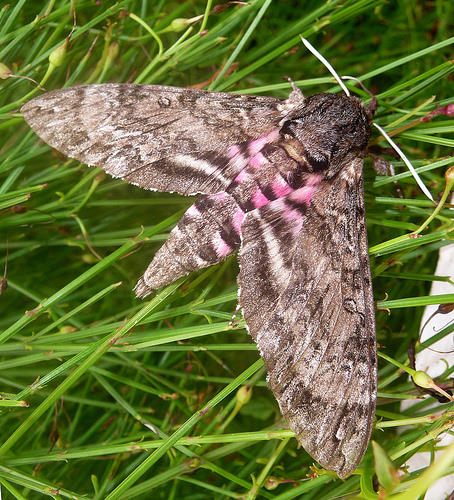
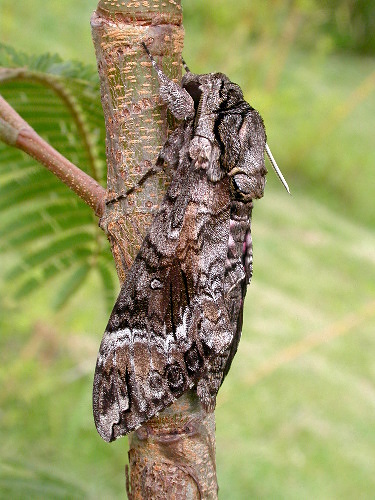
Migrant; all western Palaearctic records have been from mid-August to mid-October. The one specimen from the Portuguese mainland was caught on 21 September (Marabuto, 2006).
OVUM: As for Agrius convolvuli.
LARVA: Full-fed 90--100mm. Polymorphic: usually green, brown or yellow.
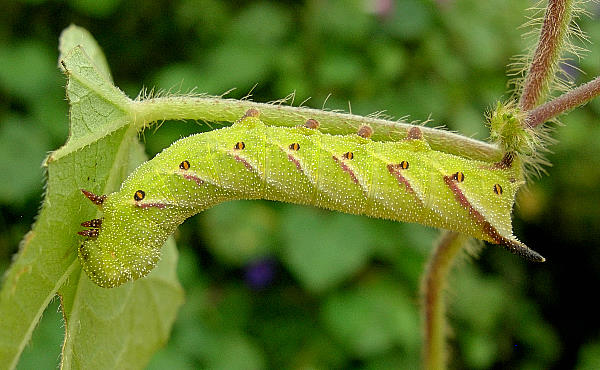
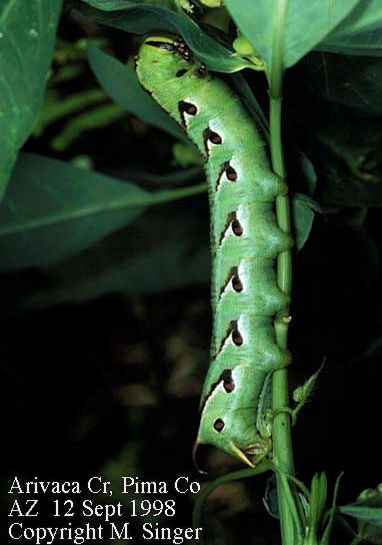
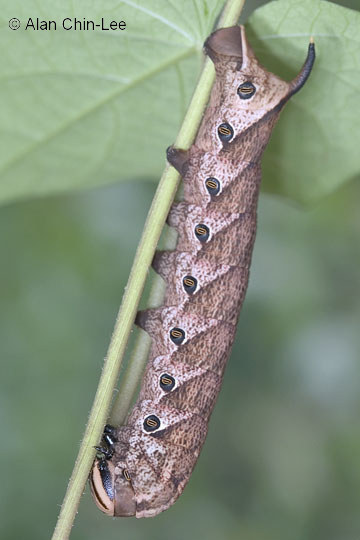

Very similar to that of Agrius convolvuli, but has never been found in Europe.
Hostplants. Convolvulaceae, especially Ipomoea batatas (sweet potato) in the Americas.
PUPA: 55--60mm. Very like that of Agrius convolvuli, but with the proboscis reaching half-way down wings before reflexing under and ending in a 'bulb' which touches case near head.
None recorded within the region.
Occurs within the region as an autumn vagrant, though the frequency is not known due to its confusion with Agrius convolvuli. Specimens have been found in England (Barrett, 1895) and on ships off the French coast. On the 21 September 2002 a male was captured at light in the region of Serpa, Baixo Alentejo, Portugal, the first European mainland record for this species (Marabuto, 2006).
Extra-limital range. The tropics and subtropics of the New World, and the Galapagos (Hayes, 1975; Roque-Albelo, 2001) and Hawaiian (Zimmerman, 1958; Beardsley, 1979) Islands. As a migrant, north to Canada, south to Patagonia and the Falkland Islands and, occasionally, to western Europe. Agrius cingulatus has established itself on Ascension Island and in the Cape Verde Islands west of Senegal, West Africa (Riley, 1894; Aurivillius, 1910; Bauer & Traub, 1980; Báez & García, 2005; Tennent & Russell, 2015; Txalen Galina-Gaiton, iNaturalist 2015; Aistleitner, 2022; Jean-Paul Boerekamps, iNaturalist 2023), adults having arrived, presumably, from Brazil. There is also a record from South Africa (Vári, Kroon & Krüger, 2002).
There are also increasing reports that this species has established breeding populations on the west coast of mainland Africa (Senegal, Cote d'Ivoire) (Jean Haxaire, pers. comm., 2008; Ballesteros-Mejia, Kitching & Beck, 2011).
 Return to species list
Return to species list